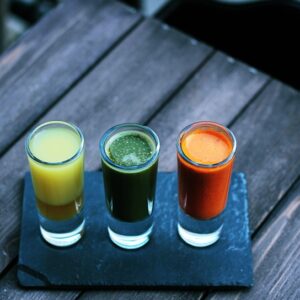In today’s fast-paced world, people are becoming increasingly aware of the impact their dietary choices have on both personal health and the environment. “Eating clean and green” isn’t just a trendy catchphrase—it’s a lifestyle choice that emphasizes whole, minimally processed foods and sustainable eating habits. This approach can lead to improved well-being while also contributing to a healthier planet. Let’s explore what it means to eat clean and green and how you can incorporate it into your daily life.
What Is Clean and Green Eating?
Clean eating is all about consuming foods in their most natural state. It encourages eating fresh fruits and vegetables, whole grains, lean proteins, and healthy fats, while avoiding processed foods, refined sugars, artificial ingredients, and preservatives. The “green” component adds an environmental dimension—choosing foods that are sustainably produced, locally sourced, and plant-based whenever possible.
This combination supports not only physical health but also reduces your ecological footprint. Factory farming, long-distance food transport, and overpackaging are major contributors to greenhouse gas emissions. By making thoughtful food choices, you contribute to a more sustainable food system.
The Health Benefits of Clean and Green Eating
Switching to a clean and green diet offers a range of benefits for your body and mind. Here are a few key advantages:
-
Improved Digestion: Whole foods are rich in fiber, which aids in digestion and helps prevent constipation. Eating clean also means consuming fewer chemicals and additives that can upset your gut microbiome.
-
Increased Energy Levels: Clean, nutrient-dense foods provide the vitamins and minerals your body needs to function optimally. Many people report feeling more energetic and focused when they cut out processed foods.
-
Weight Management: Whole, plant-based foods are generally lower in calories but higher in nutrients. They help you feel full longer, reducing the likelihood of overeating.
-
Reduced Risk of Chronic Diseases: Studies have shown that diets rich in fruits, vegetables, and whole grains can lower the risk of heart disease, diabetes, and certain cancers.
Incorporating more plant-based meals also lowers your intake of saturated fats and cholesterol, contributing to overall heart health.
Tips for Transitioning to a Clean and Green Diet
Adopting a new way of eating doesn’t have to be overwhelming. Here are some practical steps to ease the transition:
-
Start Simple: Begin by replacing processed snacks with fresh fruits or nuts. Gradually increase your intake of vegetables and whole grains.
-
Shop Smart: Choose seasonal produce, and support local farmers’ markets when possible. Look for organic and non-GMO labels to avoid pesticides and harmful additives.
-
Plan Your Meals: Preparing meals in advance can help you stick to your clean and green goals. Try cooking in batches and storing leftovers for busy days.
-
Limit Animal Products: Reduce your consumption of meat and dairy, and explore plant-based alternatives like legumes, tofu, and nut-based milks. Even committing to one meatless day per week—like “Meatless Monday”—can make a difference.
-
Read Labels: If you buy packaged foods, choose those with the fewest and most recognizable ingredients. Avoid items with added sugars, artificial flavors, or trans fats.
Clean and Green on a Budget
One common misconception is that eating healthy and sustainably is expensive. While some organic and specialty items can be pricier, there are many ways to eat clean and green without breaking the bank:
-
Buy in Bulk: Items like grains, beans, and nuts are often more affordable when purchased in bulk and can be stored for long periods.
-
Cook at Home: Preparing your meals from scratch is usually cheaper and healthier than eating out or buying prepackaged foods.
-
Grow Your Own: Even a small herb garden on your windowsill can help reduce costs and ensure fresh, pesticide-free ingredients.
-
Use Frozen Produce: Frozen fruits and vegetables are often less expensive than fresh ones and still retain most of their nutrients.
With thoughtful planning and a little creativity, clean and green eating can be accessible to nearly everyone.
A Lifestyle Worth Embracing
Eating clean and green is not about perfection—it’s about making more mindful choices, one meal at a time. By focusing on whole, natural foods and considering the environmental impact of what’s on your plate, you nourish your body while helping to preserve the planet for future generations.
Whether you’re just beginning your clean eating journey or looking to make your diet more eco-friendly, every small step counts. The road to better health and a healthier world starts with what you choose to eat today.






